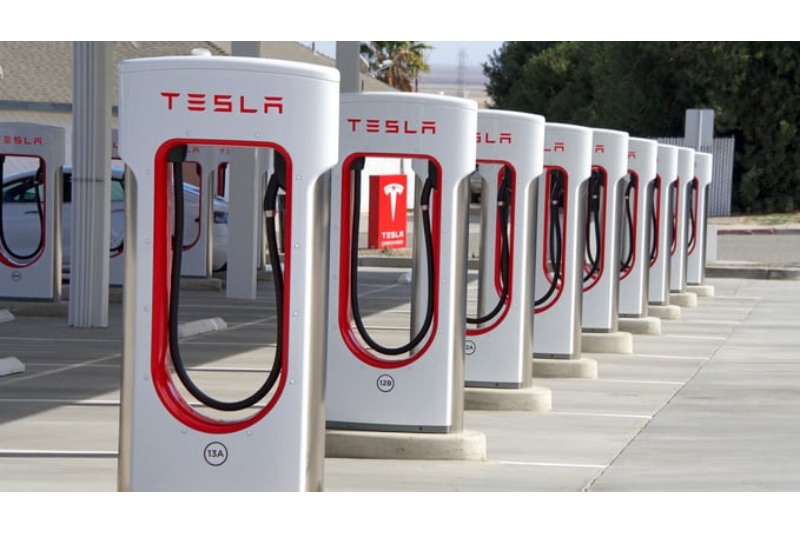More Than 16,000 Tesla Supercharger Stations Available For Ford, Rivian, And Other Vehicles

As of right now, around 25,000 charging stalls are available at little over 2,200 Tesla Supercharger locations nationwide, according to data from the U.S. Department of Energy (DOE). The Supercharger network is expanding rapidly on a global scale as well as in the United States.
Superchargers are now available to non-Tesla drivers as well. However, since the 25,000 Superchargers are a combination of V2, V3, and the newest V4 stalls, some users on X, the former name of Twitter, questioned how many of these are truly available to other EV owners.
Last Monday, Rohan Patel, the vice president of business development and public policy at Tesla, corrected the record. Owners of Ford and Rivian vehicles have been authorized to utilize Superchargers using an adapter that enables Tesla’s North American Charging Standard (NACS) connectors to plug into CCS1 ports, and he stated that little over 16,000 dispensers are available to them.
In the upcoming months, almost all other significant American automakers will let their patrons access to this network as well.
Even Rivian’s advertisements claim that owners of R1T and R1S vehicles can now use a NACS to CCS1 adaptor to access over 15,000 Supercharger spaces. (Note that even for owners of Ford and Rivian EVs, the deployment is still ongoing and not all Superchargers may be adapter-compatible at this time.) About 11,000 spaces, the majority of which are V2 stalls, are reserved exclusively for Tesla customers, Patel continued.
To make older charging stations accessible to non-Tesla vehicles, more funding and technological effort would be needed. The discussion stated that non-Tesla drivers would only have access to V3 and V4 Superchargers, which are faster and more efficient than the older models. “Much better to focus on rapid growth in new/better Superchargers and generally much larger stations with more stalls,” the user wrote.
In response to a question from an X user about whether Tesla would increase its investment in Level 2 chargers—which are better for home or office use but slower than DC fast chargers—Patel stated that growing Tesla’s L2 charger business for workplace, commercial, and multi-family use cases was a “major priority” for the automaker.
Additionally, he stated that although Tesla was adding a number of new charging stations each week, one of its main obstacles was the drawn-out utility connecting procedure.
Large-scale installation of public DC fast chargers is more difficult than it first appears. Patel used the term “utility interconnection” to refer to the lengthy process involved in connecting these charging stations to the utility company’s electrical infrastructure.
In general, there are a number of steps in this procedure, such as a technical review, installation and commissioning, monitoring, and maintenance, as well as an application and approval that includes the location, specifications, and other pertinent information.
Nevertheless, thanks to the agreement of several automakers to implement the NACS standard, the charging experience for thousands of non-Tesla EV owners is expected to get better this year. Owners will get NACS to CCS1 adapters in the near future. Many EVs will have the NACS port built in right out of the factory starting next year.
Tom Moloughney, a writer to InsideEVs, was one of the first drivers to test Ford’s NACS adaptor at a Tesla Supercharger at the beginning of this month. He reported that he had no trouble boosting an F-150 Lightning. Early testers have also found that charging Rivian EVs at superchargers is rather simple.